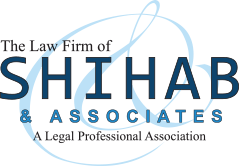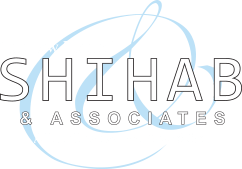As a foreign entrepreneur seeking to invest at least $500,000 in a new commercial enterprise, you will obtain a conditional permanent resident status “green card” upon the approval of your initial I-526 petition. Your permanent resident status will be conditional for a two-year period, and you must again petition (with Form I-829) at the end of this period to have the conditional status removed.
Perhaps the most important criteria USCIS will examine in approving your I-829 petition, is whether your investment has led to the creation of at least ten new full-time jobs for qualifying employees. You will need to show by a preponderance of the evidence that the plan from your initial I-526 petition was fulfilled within the two year conditional status period. This can even be achieved if you have not yet created ten new jobs—for example, if you have saved the loss of preexisting jobs in a troubled business, or if you will likely create ten new jobs within a reasonable time.
The attorneys at The Law Firm of Shihab & Associates, Co., LPA have decades of combined experience in successfully navigating through such complex areas. Contact us by email or phone at 1-877-479-4USA (4872) for a consultation to discuss your planned investment and how we can represent your interests effectively.
How Can I Meet the Job Creation Requirement?
When you file your I-829 petition to remove your conditional status, USCIS will examine whether your new commercial enterprise has created at least ten new jobs. Each EB-5 investor must create ten new jobs, if your commercial enterprise consists of more than one EB-5 investor.
There is no need for employees to have held their job for any particular length of time, so long as they are employed at the time of the filing of your I-829 petition. If an employee quit or was fired, you can prove that the “job” itself still exists, through evidence of your efforts to actively recruit a new employee. The USCIS will also closely scrutinize any jobs that they label as “make work” jobs that they feel are temporary in nature, unneeded, or that are solely to meet the job creation requirement.
To be considered as a “qualifying employees,” the persons you hire must provide services or labor to your enterprise directly and not be independent contractors. There is some flexibility for some industries, however, such as construction, in which employees paid directly by you may count as “employees” for I-829 purposes, even though they may appear to be independent contractors.
A “qualifying” employee must be either a U.S. citizen, a lawful permanent resident, or a lawful immigrant authorized to work within the U.S. The employee may not be a nonimmigrant visa holder, such as an H-1B employee. You also may not count yourself, your spouse, or your children as employees.
The jobs your commercial enterprise creates must also be “new, full-time, continuous, and permanent.” They must be at least 35 hours per week. They may not be temporary, intermittent, or seasonal jobs. The general requirement is that the jobs must be projected to last at least two years. And, they must be “new” jobs that are not relocated from another place within the U.S.
Important documents you will need to submit to demonstrate job creation include your quarterly tax returns, employee W-2 and I-9 forms, and a letter from your human resource manager explaining anything that is unclear or that may generate a request for evidence.
What if My Investment is in a “Troubled Business?”
If you filed your I-526 petition as a new commercial enterprise investment in a “troubled business,” you do not need to show the creation of ten new jobs. Instead, you must show that your investment enabled the troubled business to preserve all of its preexisting full-time jobs. Part-time jobs need not be preserved. The business must have at least ten preexisting jobs—if not, then your investment must raise the number of existing jobs to at least ten.
What if My Investment is with a Regional Center Project?
For regional center project investments, USCIS will still require proof of the creation of ten new jobs. This can be achieved through more than just the “direct” jobs created by your investment. “Direct” jobs are those you or the regional center create by directly hiring new employees. You can also receive credit for “indirect” jobs, which are jobs held by suppliers of your business or on-site businesses such as independent contractors, but who are not your direct employees. Finally, you can also often receive credit for “induced” jobs created as a result of your investment. These are jobs that are created in the local community based on the economic stimulus created by your investment, such as jobs in the service sector that supply goods and services to your direct and indirect employees. Induced jobs, and sometimes even indirect jobs, can be calculated based on economic modeling methodologies. These methods can be sufficient to prove by a preponderance of the evidence that at least ten new jobs were created through your investment with the regional center project.
What if I am Seeking Job Creation Credit under the Tenant Occupancy Method?
The tenant occupancy method at the I-526 stage requires you to have a plan to create new jobs for employees of business tenants in space leased in your EB-5 regional center investment project. At the I-829 stage, you must present evidence that the project tenants actually hired new employees. You may present evidence of a tenant’s actual revenues showing the hiring of new employees. If you are proposing to create new jobs within a reasonable time, you may project how many employees will be hired based on the square footage of the leased space and the type of industry of the tenant.
What if My Business Will Create New Jobs Within a Reasonable Time?
Even if your new commercial enterprise has not created ten new jobs by the time you file your I-829, you may still have your conditional status removed if you can show that you will create the new jobs within a reasonable time. The USCIS has determined that a “reasonable time” is within one year of the end of your conditional residence period. To obtain this extra one year period, the USCIS will examine the “totality of the circumstances.” These factors include: 1) when the new jobs are expected to be created, (i.e. within the one extra year), 2) the reasons the jobs were not created during the two-year conditional period, 3) the unique nature of industry and any unforeseen or mitigating factors, and 4) any other relevant evidence you may submit.
Contact Us
If you would like further information about the EB-5 immigrant visa or any other immigration matter, please contact our experienced immigration attorneys at The Law Firm of Shihab & Associates, Co., LPA to schedule a consultation with an attorney at an office near you.

